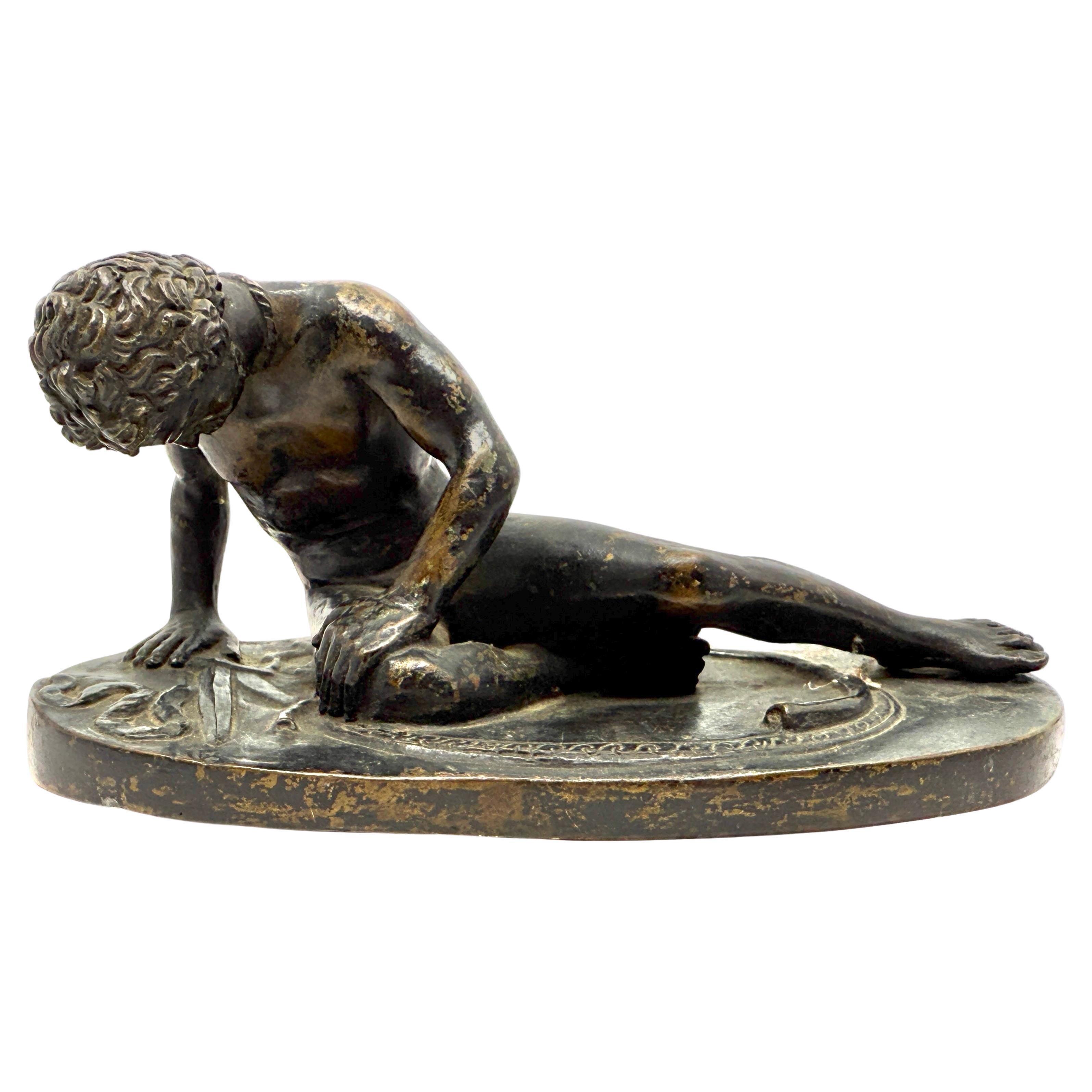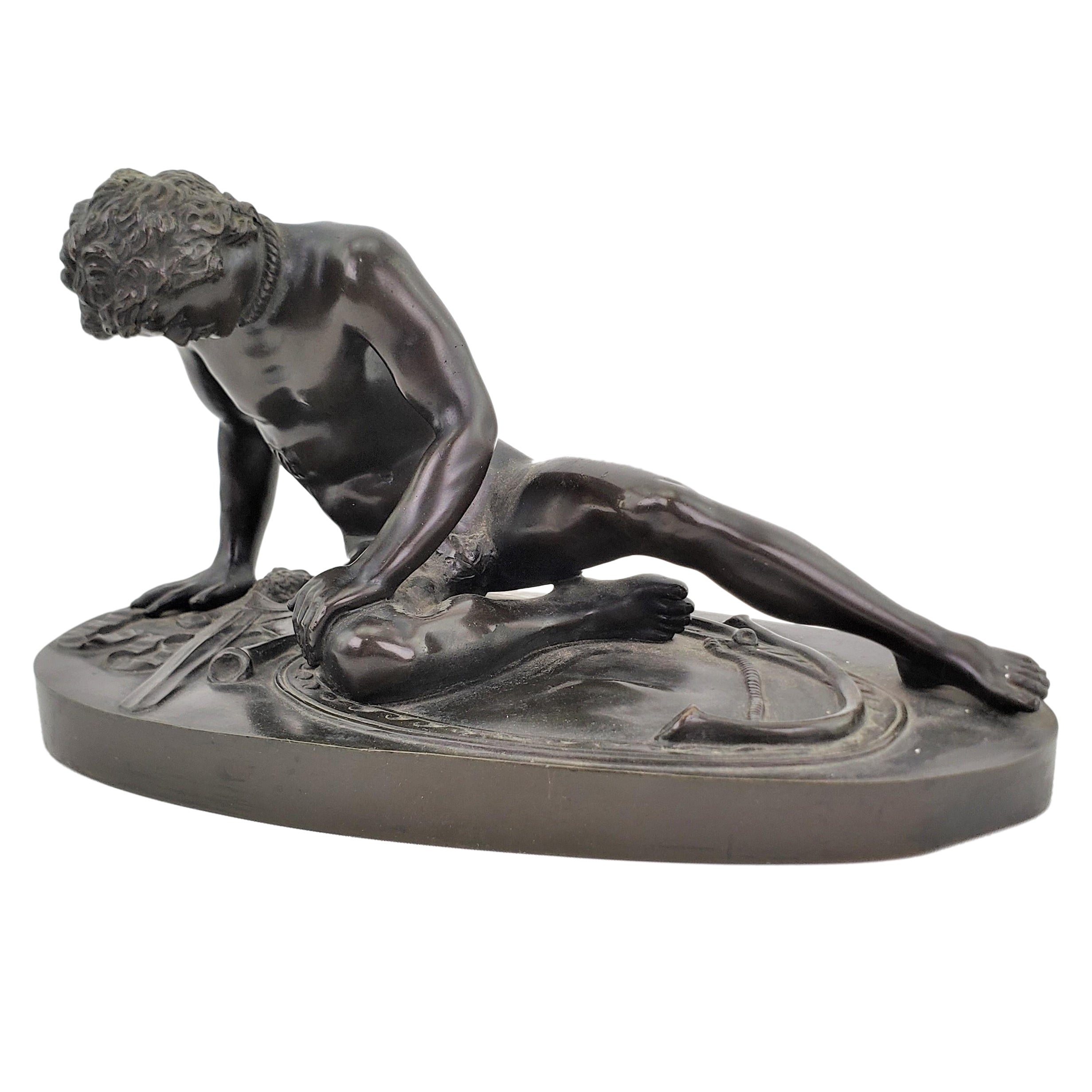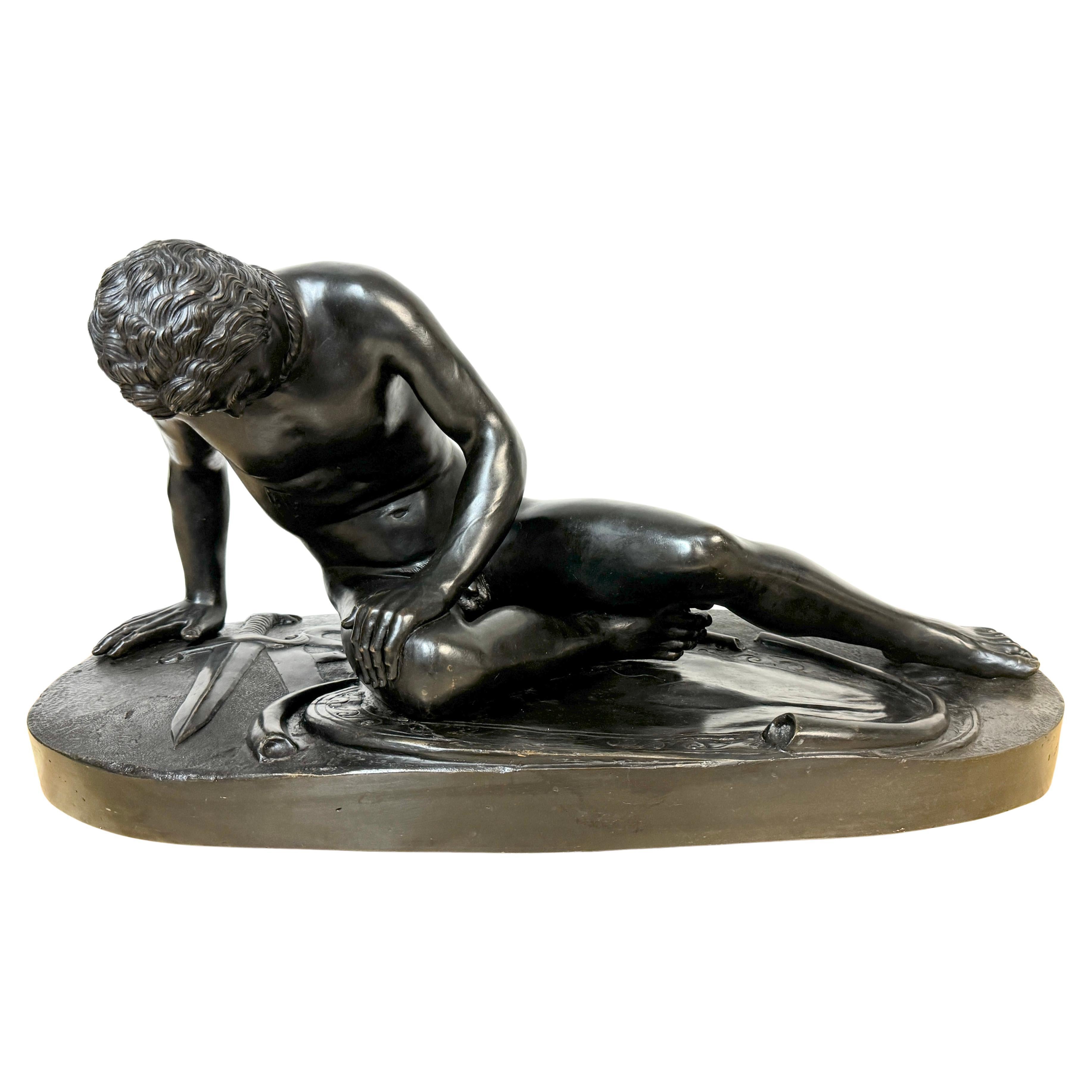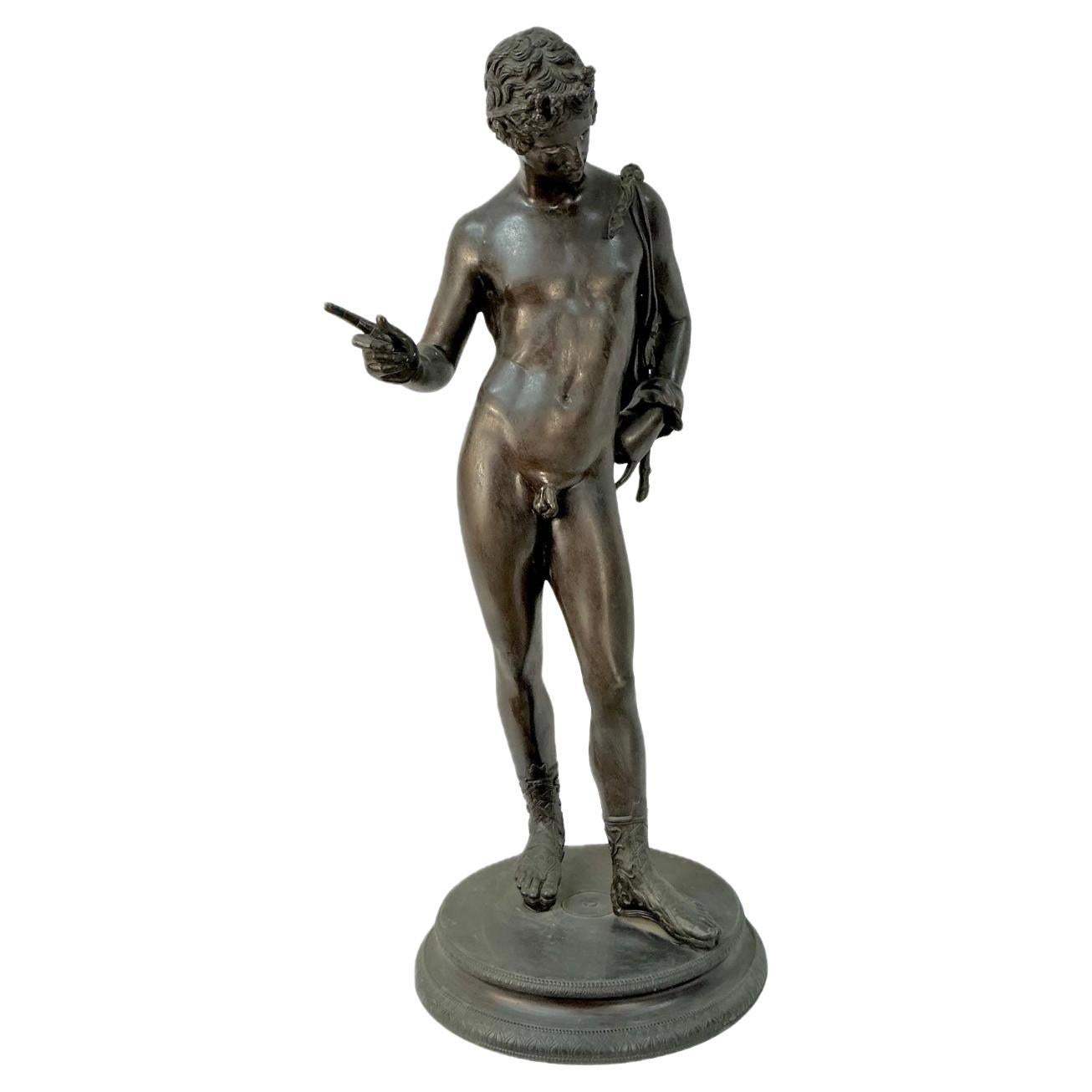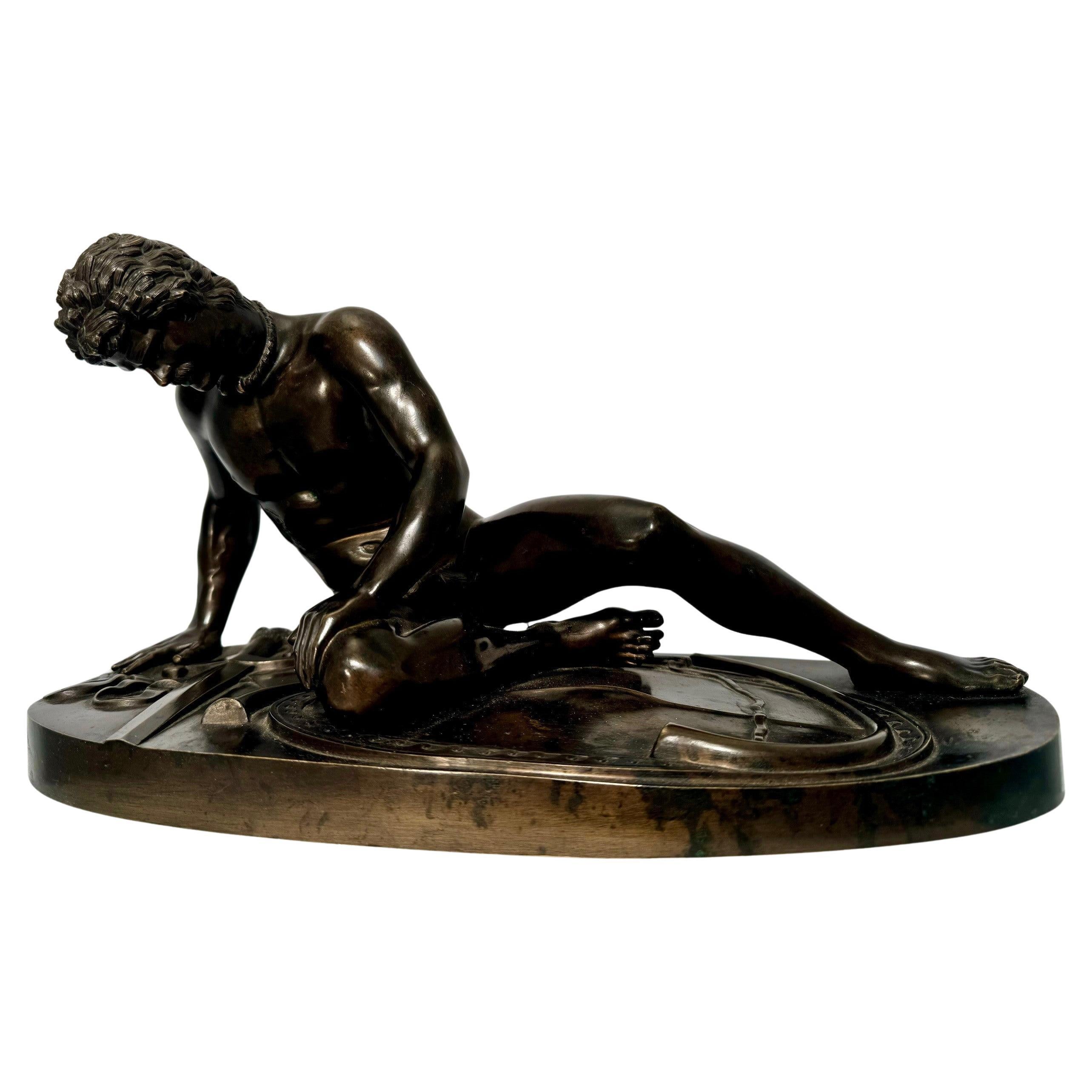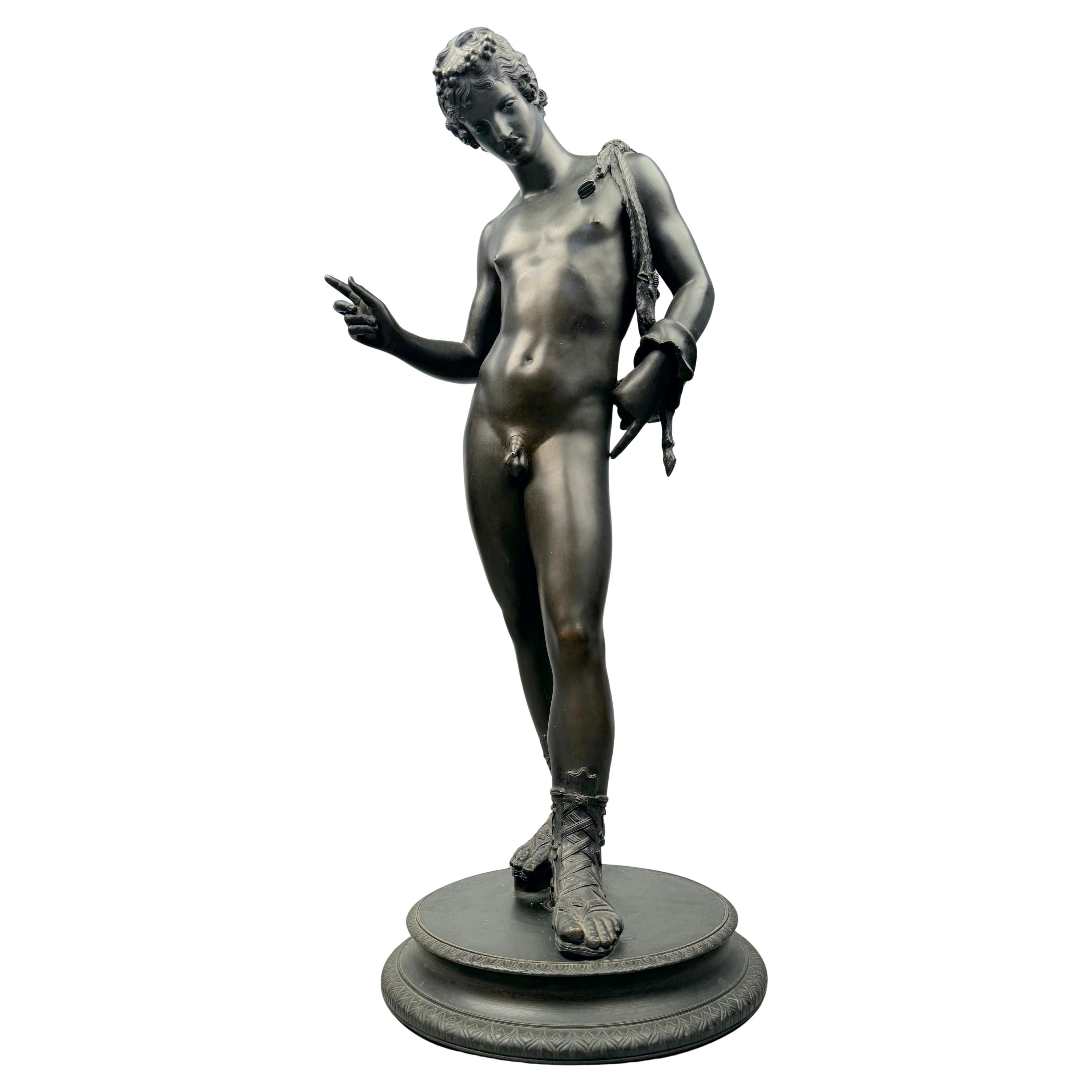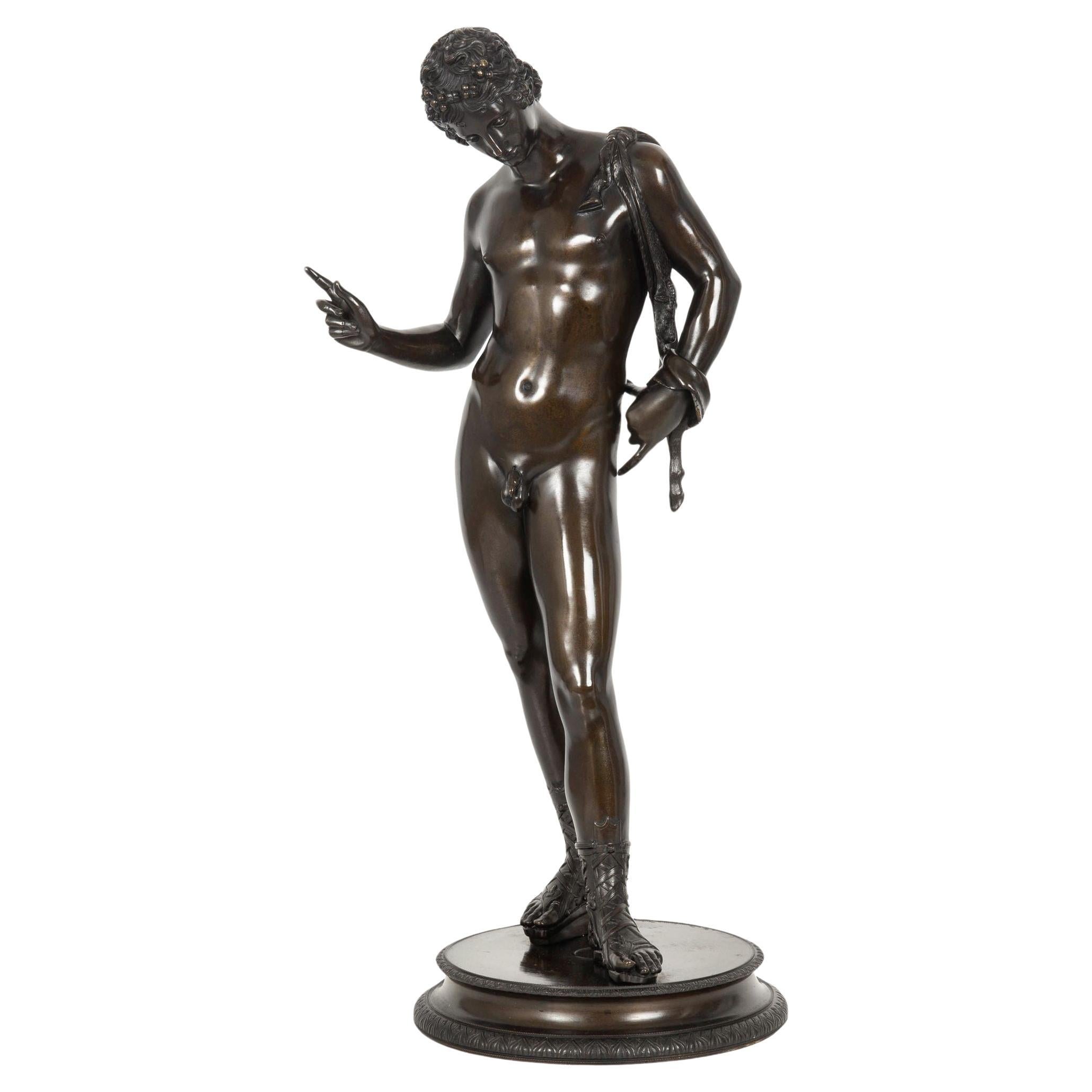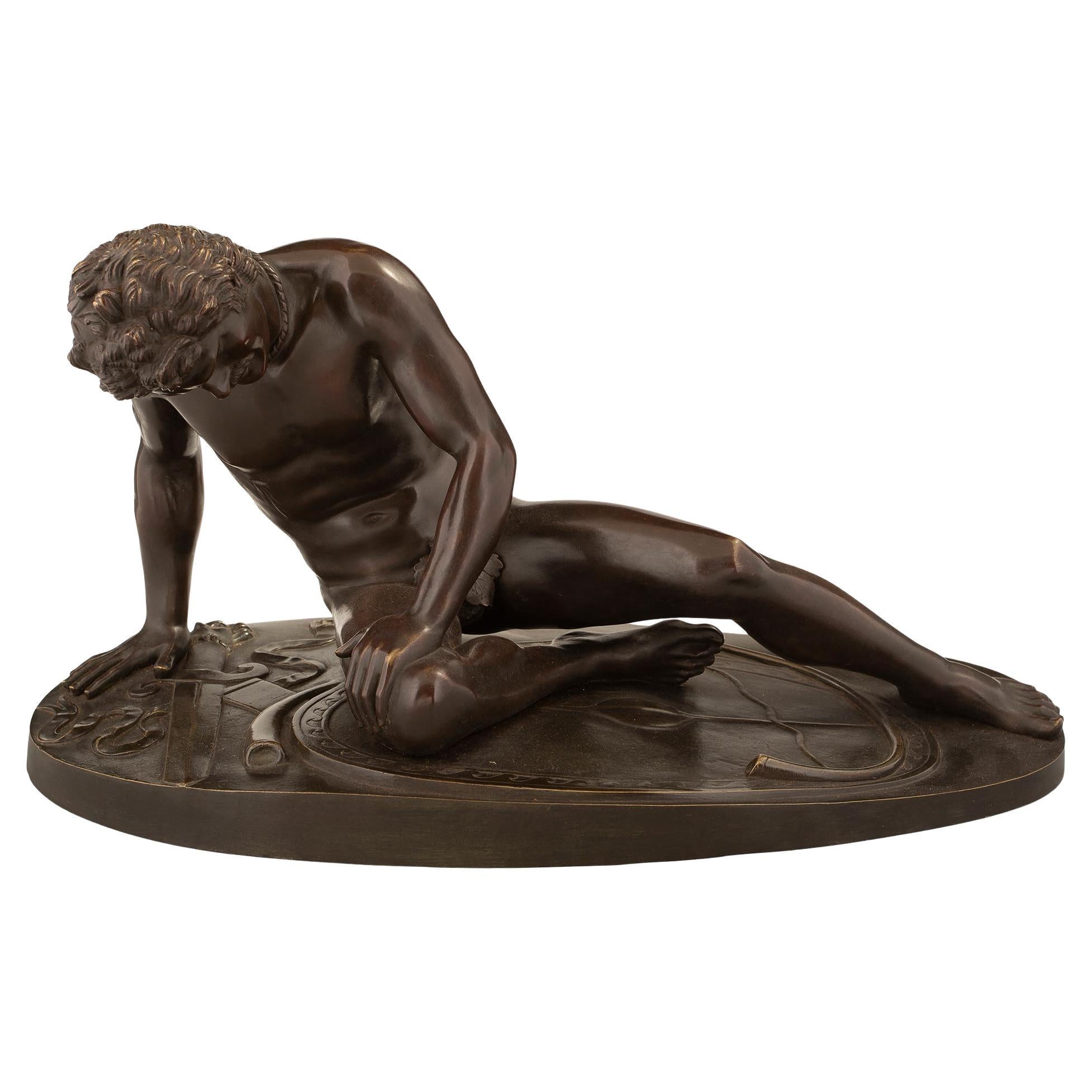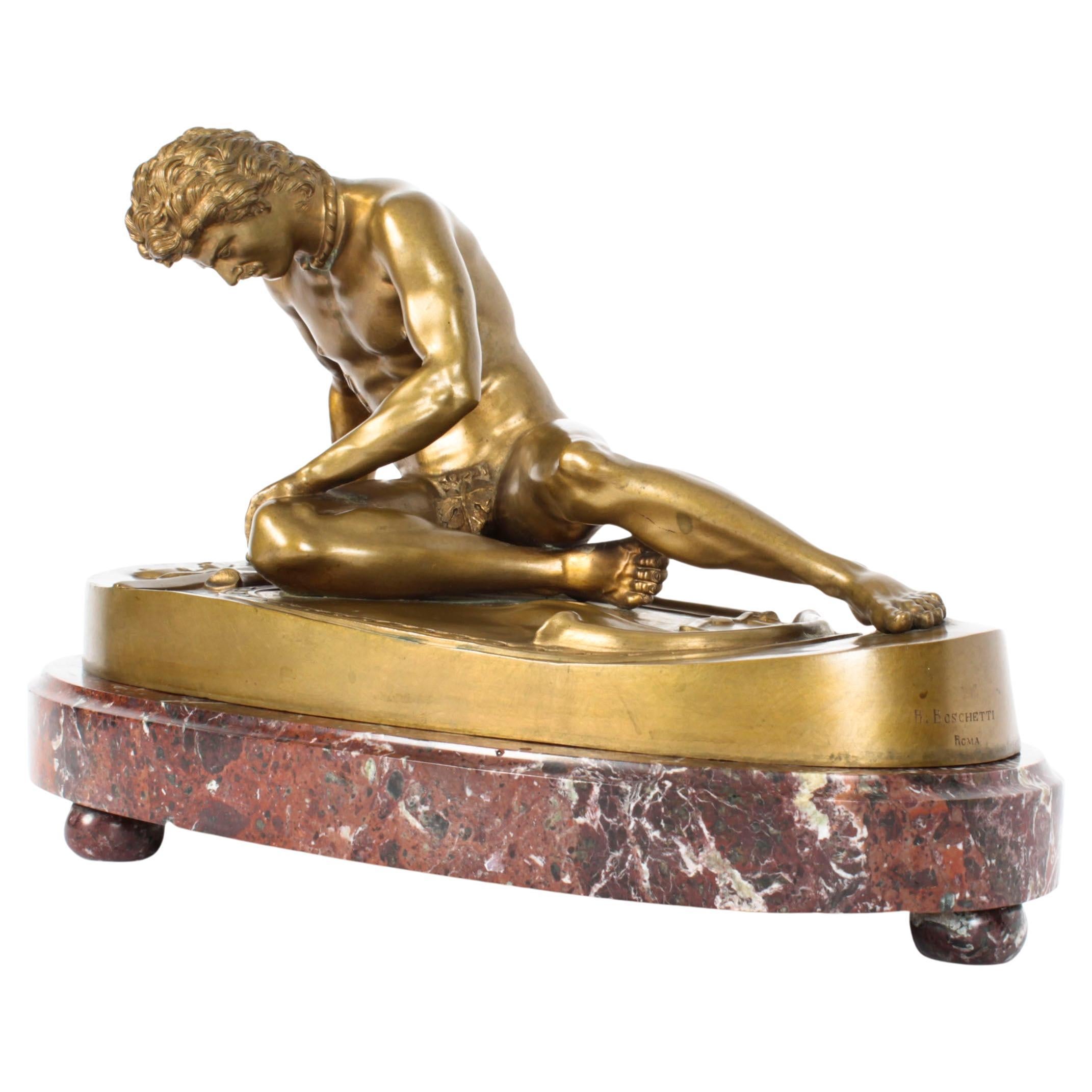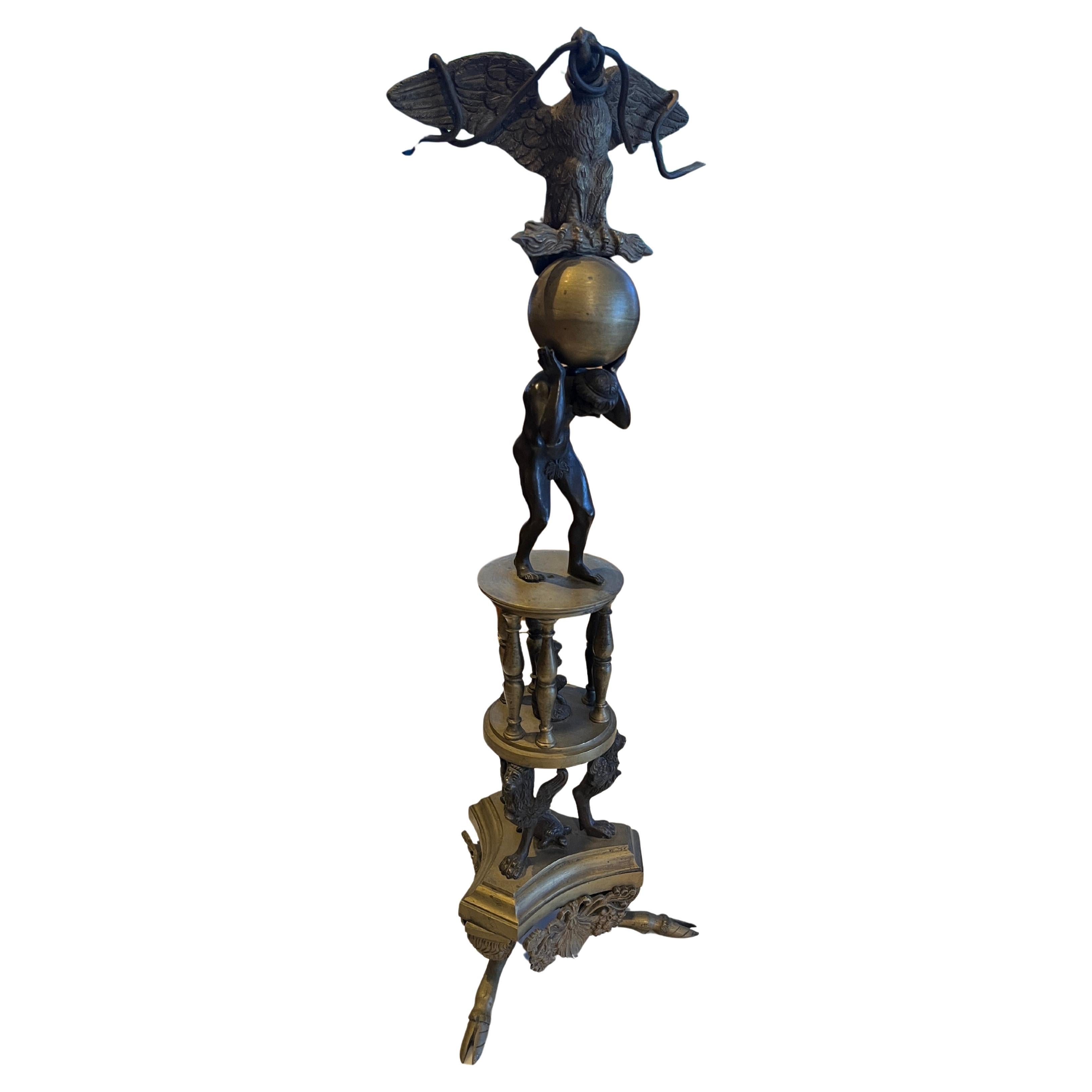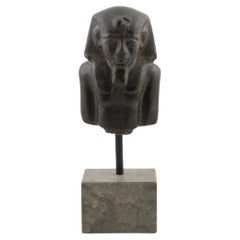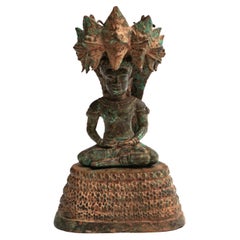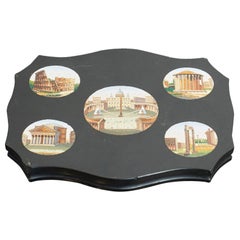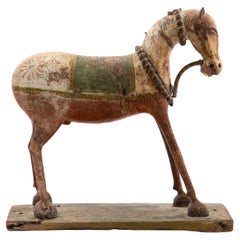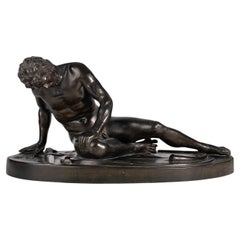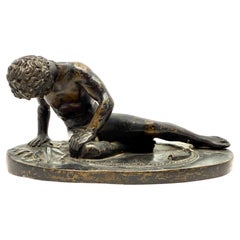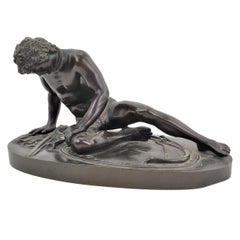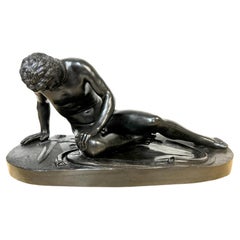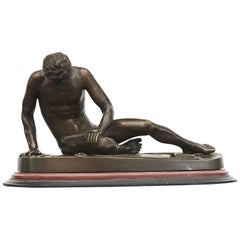
19th Century Italian Grand Tour' Bronze Sculpture of "The Dying Gaul"
View Similar Items
Want more images or videos?
Request additional images or videos from the seller
1 of 9
19th Century Italian Grand Tour' Bronze Sculpture of "The Dying Gaul"
Price:$1,624.98
$1,868.13List Price
About the Item
- Dimensions:Height: 7.09 in (18 cm)Width: 12.21 in (31 cm)Depth: 7.09 in (18 cm)
- Materials and Techniques:
- Place of Origin:
- Period:
- Date of Manufacture:1575
- Condition:Wear consistent with age and use.
- Seller Location:Kastrup, DK
- Reference Number:Seller: 1027021stDibs: LU1007418329772
About the Seller
5.0
Gold Seller
Premium sellers maintaining a 4.3+ rating and 24-hour response times
Established in 1974
1stDibs seller since 2013
510 sales on 1stDibs
Typical response time: 1 hour
Authenticity Guarantee
In the unlikely event there’s an issue with an item’s authenticity, contact us within 1 year for a full refund. DetailsMoney-Back Guarantee
If your item is not as described, is damaged in transit, or does not arrive, contact us within 7 days for a full refund. Details24-Hour Cancellation
You have a 24-hour grace period in which to reconsider your purchase, with no questions asked.Vetted Professional Sellers
Our world-class sellers must adhere to strict standards for service and quality, maintaining the integrity of our listings.Price-Match Guarantee
If you find that a seller listed the same item for a lower price elsewhere, we’ll match it.Trusted Global Delivery
Our best-in-class carrier network provides specialized shipping options worldwide, including custom delivery.More From This Seller
View All19th Century Italian Grand Tour Figure of 'Faro' Carved in Black Basal
Located in Kastrup, DK
A very decorative 19th century Italian Grand Tour figure of 'Faro' carved in black basalt, mounted on a grey stone base.
Height: 30 cm.
Italy 19th century.
Category
Antique Mid-19th Century Italian Grand Tour Mounted Objects
Materials
Stone
18-19th Century Bronze Naga Meditating Bronze Buddha Statue
Located in Kastrup, DK
Bronze Buddha depicted in meditation pose sheltered by a Naga (a seven-headed snake). I two parts.
Naga's body coiled up to serve as a cushion for the Buddha with 7 pronged head prov...
Category
Antique Mid-18th Century Burmese Other Figurative Sculptures
Materials
Bronze
19th Century Grand Tour Micro Mosaic Tablet with Roman Views
Located in Kastrup, DK
19th century Micro Mosaic tablet with five oval panels with Roman views, approx. 1860-1880.
Very fine tesserae and small briquettes of semi-precious stone...
Category
Antique 19th Century Italian Grand Tour Wall-mounted Sculptures
Materials
Stone, Marble
8-19th Century Wooden Horse
Located in Kastrup, DK
A Indian 18-19th century hand-carved wooden horse decorated with polychrome colors.
In original untouched condition with a beautiful age-related patina, showing the antique authentic...
Category
Antique 18th Century Indian Folk Art Animal Sculptures
Materials
Wood
19th Century Kasli Cast Iron Horse Sculpture After Pierre-Jules Mêne
Located in Kastrup, DK
Sculpture depicting an Arabian stallion with a long mane in an enclosure, named "Djinn".
Cast in iron at the renowned Kasli Iron Foundry, located in the eastern Ural Mountains. The f...
Category
Antique Mid-19th Century Russian Other Animal Sculptures
Materials
Iron
19th Century Carved Alabaster Temple Guardian
Located in Kastrup, DK
A Burmese sculpture of a Buddhist temple / paragoda guard carved from Alabaster.
The guards guarded the temple/pagoda.
From a Danish collectors est...
Category
Antique Early 19th Century Burmese Other Figurative Sculptures
Materials
Alabaster
You May Also Like
Mid-19th Century Grand Tour Bronze Figurative Sculpture 'The Dying Gaul', Italy
Located in North Miami, FL
Mid-19th Century Grand Tour Bronze Figurative Sculpture 'The Dying Gaul', Italy
By: unknown
Material: bronze, copper, metal
Technique: cast, molded, polished, metalwork, patinated
D...
Category
Antique 1850s Italian Grand Tour Figurative Sculptures
Materials
Metal, Bronze, Copper
Grand Tour Neoclassical Bronze of “The Dying Gaul”
Located in Palm Springs, CA
A nice little bronze Grand Tour souvenir bronze of the Dying Gaul a famous sculpture of antiquity preserved in Rome. This bronze has nice detail. The patina is worn in some places and it is in estate found condition. We haven’t tried to clean or polish it.
Some patina loss minor nicks and surfaces scratches, please see the detailed photos.
For this interested this from Wikipedia about the original sculpture:
The Dying Gaul, also called The Dying Galatian[2] (Italian: Galata Morente) or The Dying Gladiator, is an ancient Roman marble semi-recumbent statue now in the Capitoline Museums in Rome. It is a copy of a now lost Greek sculpture from the Hellenistic period (323–31 BC) thought to have been made in bronze.[3] The original may have been commissioned at some time between 230 and 220 BC by Attalus I of Pergamon to celebrate his victory over the Galatians, the Celtic or Gaulish people of parts of Anatolia. The original sculptor is believed to have been Epigonus, a court sculptor of the Attalid dynasty of Pergamon.
Until the 20th century, the marble statue was usually known as The Dying Gladiator, on the assumption that it depicted a wounded gladiator in a Roman amphitheatre.[4] However, in the mid-19th century it was re-identified as a Gaul or Galatian and the present name "Dying Gaul" gradually achieved popular acceptance. The identification as a "barbarian" was evidenced for the figure's neck torc, thick hair and moustache, weapons and shield carved on the floor, and a type of Gallic carnyx between his legs.[5]
Description
The white marble statue, which may originally have been painted, depicts a wounded, slumped Gaulish or Galatian Celt, shown with remarkable realism and pathos, particularly as regards the face. A bleeding sword puncture is visible in his lower right chest. The warrior is represented with characteristic Celtic hairstyle and moustache with a Celtic torc...
Category
Early 20th Century Italian Figurative Sculptures
Materials
Bronze
Antique Grand Tour Ornately Cast 'The Dying Gaul' Italian Bronze Sculpture
Located in Hamilton, Ontario
This very ornately cast bronze sculpture is unsigned, but presumed to have been done in Italy in approximately 1900, in the Classical Roman style. This figurative study depicts the famous Classical Roman sculpture known as 'The Dying Gaul...
Category
Early 20th Century Italian Classical Roman Figurative Sculptures
Materials
Bronze
Large Italian Grand Tour Bronze Sculpture "Dying Galata" /Dying Gaul, C. 1875
Located in West Palm Beach, FL
Large Italian Grand Tour Bronze Sculpture "Dying Galata"/Dying Gaul, C. 1875, Attributed to Naples Foundry
A remarkable large Italian Grand Tour bronze sculpture titled "Dying Galata" or "Dying Gaul," dating circa 1875 and attributed to the renowned Naples Foundry. This exquisite piece, an expertly cast bronze, retains its original black-brown patina and boasts a substantial size, standing 12 inches high, 26.5 inches wide, and 13.5 inches deep. It is a distinguished example of the iconic Grand Tour sculptures, which were popular souvenirs for affluent travelers during the 19th century.
The sculpture is a faithful rendition of the ancient Roman marble statue "The Dying Gaul," also known as "The Dying Galatian" or "The Dying Gladiator." The original marble, now housed in the Capitoline Museums in Rome, is a Roman copy of a lost Greek bronze sculpture...
Category
Antique 19th Century Italian Grand Tour Figurative Sculptures
Materials
Bronze
Grand Tour bronze figure of “The Dying Gaul”, After The Antique
Located in Montreal, QC
A late 19th century Grand Tour bronze figure of “The Dying Gaul”, after the antique. The Dying Gaul depicts a warrior in his final moments, next to his shield and sword, his face contorted in pain just before he collapses from the mortal wound to his chest The original marble figure, which is in the Capitoline museum in Rome is thought to be a Roman copy of a Greek sculpture in Bronze. As an image of a vanquished enemy, the sculpture embodies courage in defeat, self-possession in the face of death, and the recognition of nobility in an alien race.
“The Dying Gaul” was found in Rome with another ancient marble...
Category
Antique Late 19th Century Italian Classical Greek Figurative Sculptures
Materials
Bronze
Grand Tour Bronze Sculpture Of Narcissus Italian 19th Century
Located in Bradenton, FL
19th Century Grand Tour Bronze Sculpture of Narcissus. Narcissus is shown in a moment of self-reflection, standing in a contemplative pose. His idealized form highlights his youthful...
Category
Antique 19th Century Italian Grand Tour Figurative Sculptures
Materials
Bronze
Recently Viewed
View AllMore Ways To Browse
Antique Gallia
Dying Gaul Sculpture
Dying Gaul
The Dying Gaul
Bronze Dying Gaul
The Galatian Bronze Sculpture
Sothebys Antique Furniture
Antique Belter Furniture
Bronze Giacometti
Large Statues
Greek Relief
Medici Antique
Bronze Goddess
Art Deco Architecture Bronze
Bronze Cast Body Sculpture
Marble Cherub
Male Nude Study
Marble Sculpture Woman

